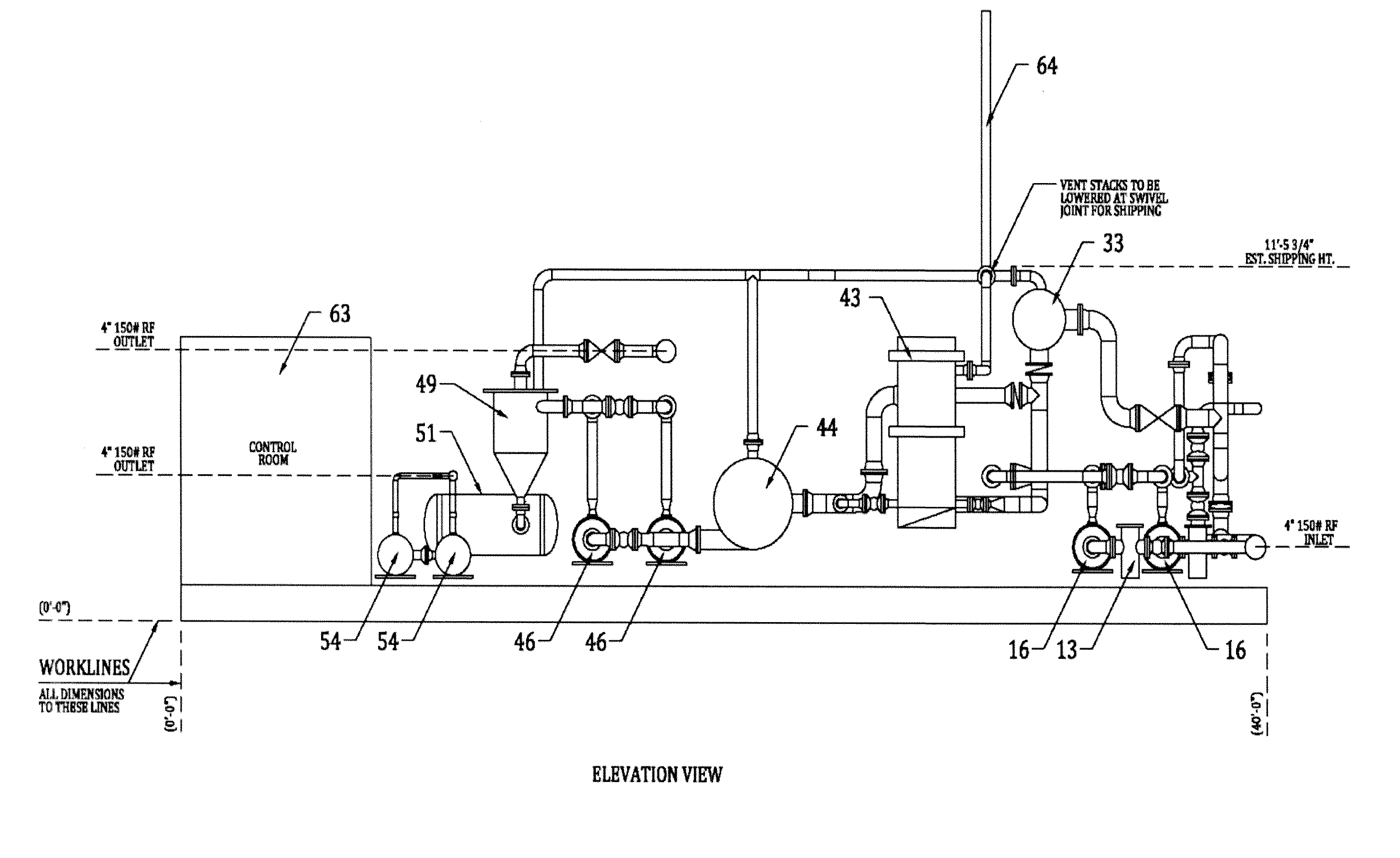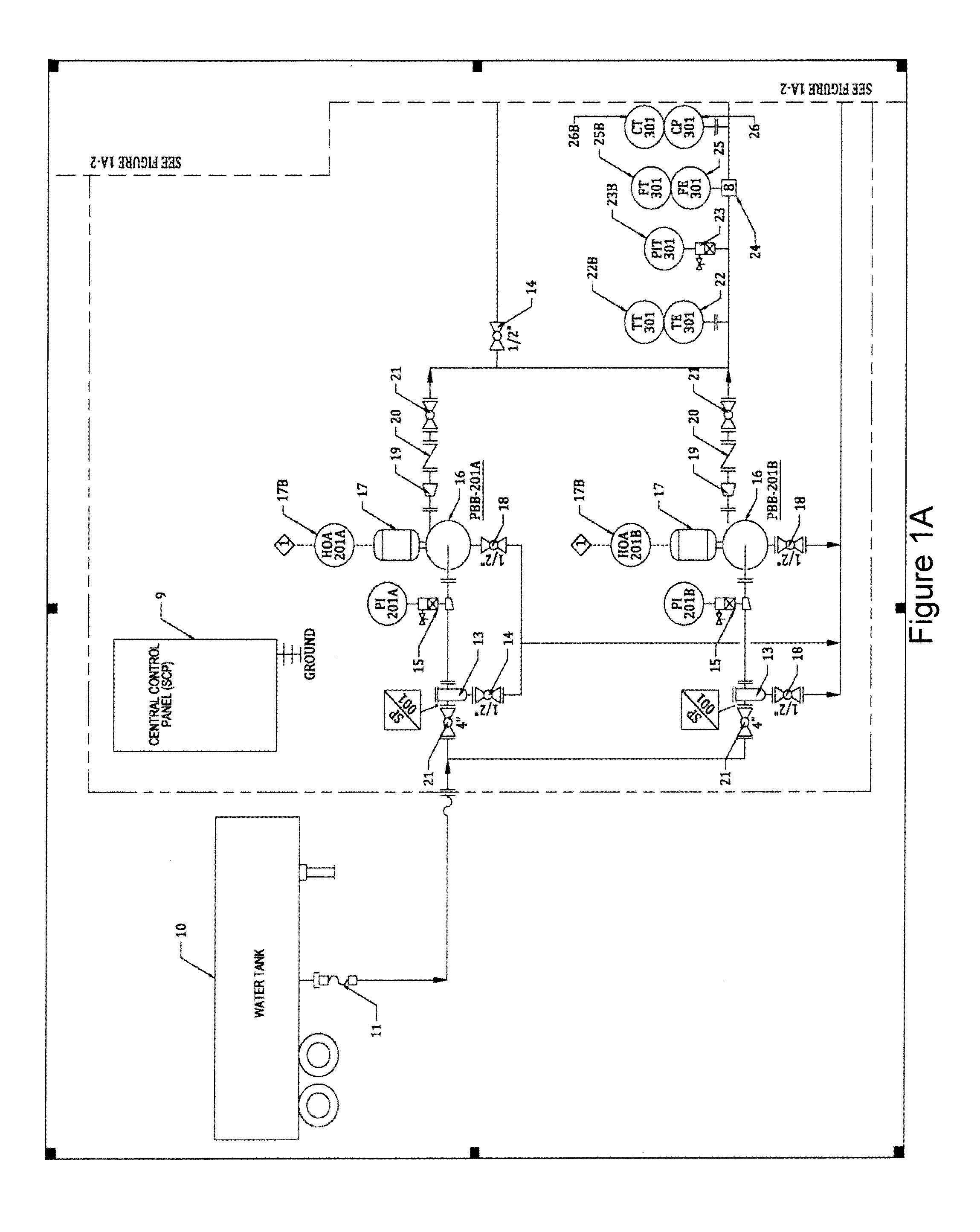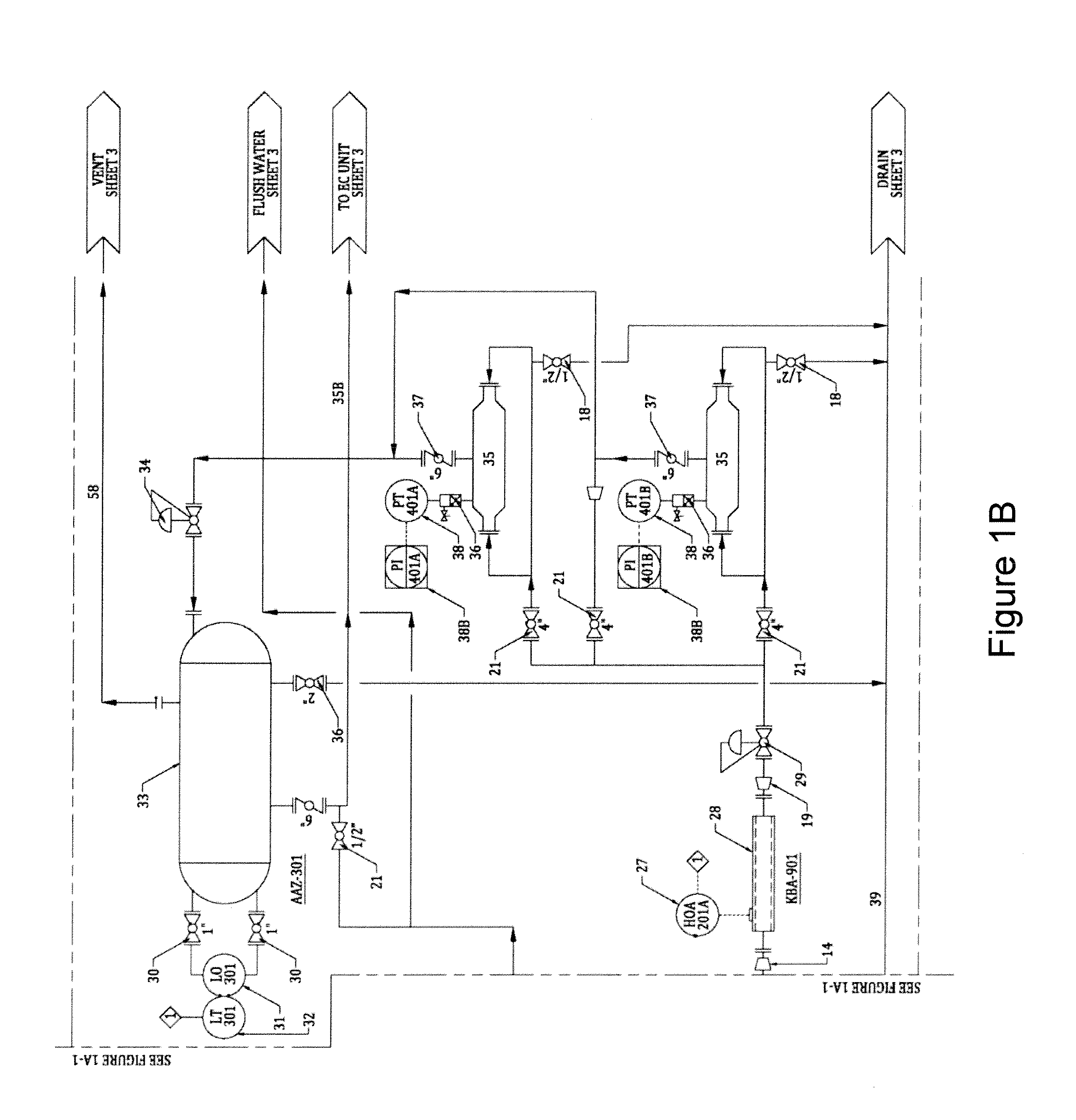Process for single system electrocoagulation, magnetic, cavitation and flocculation (emc/f) treatment of water and wastewater
a technology of electrocoagulation and flocculation, which is applied in the direction of centrifugal force sediment separation, feed/discharge of settling tanks, magnets, etc., and can solve the problems of billions of people without basic water supply services, science and the general public will have to make tough choices, and water has become a basis
- Summary
- Abstract
- Description
- Claims
- Application Information
AI Technical Summary
Benefits of technology
Problems solved by technology
Method used
Image
Examples
example 1
[0108]One aspect of the current invention is an EMC / F wastewater treatment system incorporating a number of specific technologies that when employed collectively in series treats and removes contaminants from a broad spectrum of wastewaters. The system includes the following components arranged in series: a hydrocavitation unit, an electromagnetic unit, an electrocoagulation unit and a hydrocyclone unit and / or a flocculation-sedimentation tank. The system has been designed to optimize process variables via an optionable programmable logic controller (“PLC”) in order to effectively transfer hydrodynamic, electrical and electromagnetic energy to the continuously flowing contaminated waste water. Water-contaminant mixtures treated by an EMC / F system will separate into an organic floating layer, a mineral-rich sediment layer and a clean water layer in the middle. This separation occurs within minutes of treatment and conventional equipment (flocculation-sedimentation tank and filtering,...
example 2
[0125]Turning now to FIG. 1A, power to all system components is regulated through a Central Control Panel (9). Water is pumped from a water holding tank (10) at 40 to 250 gpm and enters the treatment system train. The water passes through a flexible flowline (11) with a shutoff valve (21) and through one of two 1 / 32 in. in-line screen filters (13) to remove larger debris. The filters are equipped with one-half in. ball valves (14 and 18) which are connected to a discharge line (39) for discharge of accumulated debris which passes through the filter.
[0126]The water then passes from the filters through the flowline where the flowline pressure is monitored by a pressure gauge (15). The water enters one of two centrifugal pumps (16) equipped with monitoring gauges for flow (17) and (17B). Upon exit from the pumps, the flowline changes in diameter from 3 in. to 4 in. (19), past a check valve (20) and a 4 in. ball valve (21). The pumps are equipped with a one-half in. ball valves (18) for...
PUM
| Property | Measurement | Unit |
|---|---|---|
| temperatures | aaaaa | aaaaa |
| temperature | aaaaa | aaaaa |
| pH | aaaaa | aaaaa |
Abstract
Description
Claims
Application Information
 Login to View More
Login to View More - R&D
- Intellectual Property
- Life Sciences
- Materials
- Tech Scout
- Unparalleled Data Quality
- Higher Quality Content
- 60% Fewer Hallucinations
Browse by: Latest US Patents, China's latest patents, Technical Efficacy Thesaurus, Application Domain, Technology Topic, Popular Technical Reports.
© 2025 PatSnap. All rights reserved.Legal|Privacy policy|Modern Slavery Act Transparency Statement|Sitemap|About US| Contact US: help@patsnap.com



